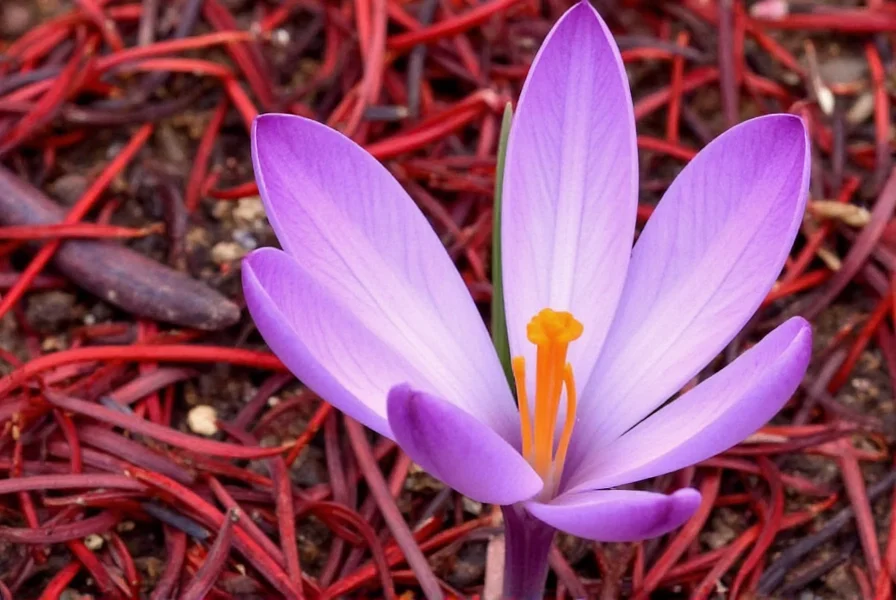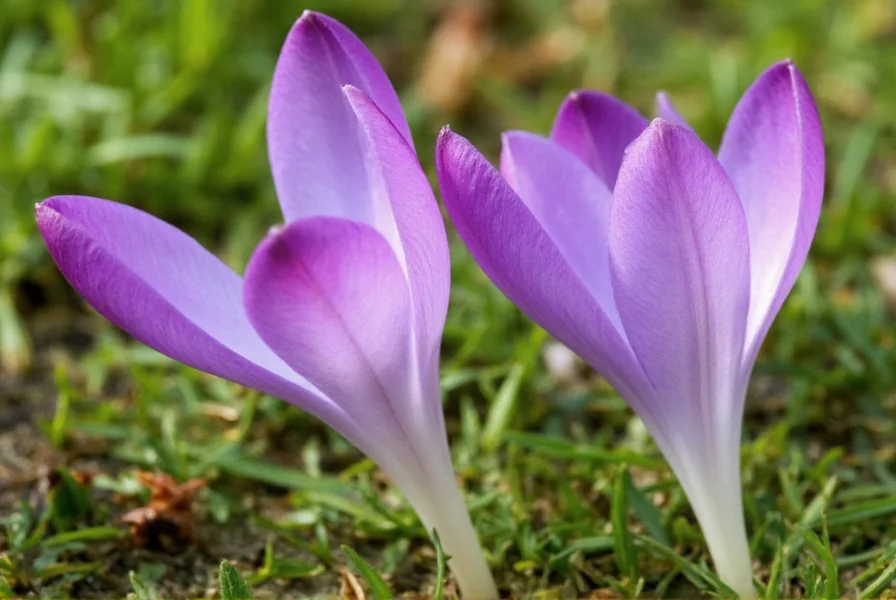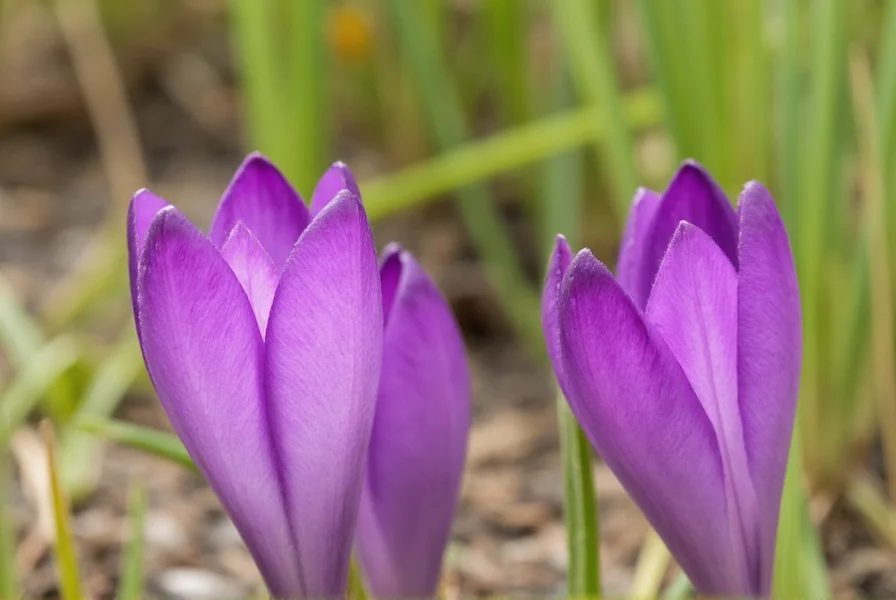The saffron crocus, scientifically known as Crocus sativus, represents one of nature's most fascinating botanical-commercial relationships. Unlike common garden crocuses that bloom in spring, this particular species flowers in autumn, producing delicate purple blossoms that hide the precious red stigmas within. These three thread-like stigmas per flower, when carefully hand-harvested and dried, become the saffron spice renowned for its distinctive flavor, vibrant color, and medicinal properties.
Botanical Characteristics of Crocus sativus
Crocus sativus belongs to the Iridaceae family and displays several unique botanical features that distinguish it from other crocus varieties. This perennial flowering plant grows to approximately 20-30 centimeters in height, with narrow, grass-like leaves emerging alongside its flowers. The plant's most remarkable characteristic is its sterility—it cannot produce viable seeds due to being a triploid (having three sets of chromosomes instead of the usual two).
Because of this genetic anomaly, saffron crocus propagation occurs exclusively through manual corm division. Each flowering season, the original corm produces 5-10 new corms underground, which growers must carefully separate and replant. This labor-intensive reproduction method directly contributes to saffron's extraordinary cost, as it limits the plant's natural spread and requires significant human intervention for cultivation.

The Saffron Production Process
Understanding how saffron crocus produces saffron requires examining its precise harvesting requirements. Each flower contains three crimson stigmas that must be hand-picked within a narrow 1-2 week flowering window each autumn. Approximately 150 flowers yield just 1 gram of dried saffron, requiring about 40 hours of meticulous labor to produce a single ounce.
| Production Stage | Time Required | Yield per Flower |
|---|---|---|
| Flowering period | 2-3 weeks annually | 1 flower per stem |
| Harvesting | 30-40 hours per ounce | 3 stigmas per flower |
| Drying process | 12-24 hours | 20% weight reduction |
| Total flowers per ounce | N/A | Approximately 1,500 |
Growing Conditions and Cultivation Requirements
Successful saffron crocus cultivation demands specific environmental conditions that limit its global production to particular regions. The plant thrives in Mediterranean climates with hot, dry summers and cool, wet springs, followed by dry autumns during flowering. Ideal growing conditions include:
- Well-drained, calcareous soils with neutral to alkaline pH
- Full sun exposure with minimal shade
- Summer dormancy period with minimal moisture
- Autumn flowering triggered by seasonal temperature changes
- Winter cold period (chilling requirement) for proper development
Growing saffron crocus in home gardens presents challenges even for experienced gardeners. The plants require summer dormancy with minimal watering, making them unsuitable for regions with humid summers. In cooler climates, growers must provide winter protection while ensuring the corms receive adequate chilling hours. The difference between saffron crocus and regular crocus varieties becomes particularly evident in their seasonal requirements—while most crocuses bloom in spring, Crocus sativus flowers exclusively in autumn.
Why Saffron Crocus Commands Such High Value
The extraordinary expense of saffron directly stems from the saffron crocus's biological limitations and labor-intensive harvesting process. Several factors contribute to why saffron crocus is so expensive compared to other spices:
- Manual harvesting requirement: Each delicate flower must be picked by hand at dawn before opening
- Low yield per plant: A single plant produces only 3-4 flowers per season
- Time sensitivity: Stigmas must be removed within 24 hours of flowering
- Geographic limitations: Only specific climate zones support commercial cultivation
- Propagation challenges: Sterility requires manual corm division rather than natural reproduction
These constraints explain why Iran produces approximately 90% of the world's saffron, with smaller commercial operations in Spain, India, Greece, and Morocco. Attempts to grow saffron crocus in non-traditional regions often face challenges with climate adaptation and economic viability due to the intensive labor requirements.

Common Misconceptions About Saffron Crocus
Several misunderstandings persist about the saffron crocus plant and its relationship to the spice. Many gardeners mistakenly believe they can grow saffron from common spring-blooming crocus varieties, not realizing that only Crocus sativus produces true saffron. The difference between saffron crocus and regular crocus extends beyond seasonal blooming patterns to fundamental genetic distinctions.
Another frequent misconception involves saffron's color properties. While genuine saffron imparts a golden-yellow hue to foods, some sellers attempt to pass off cheaper alternatives like safflower or turmeric as saffron. True saffron from Crocus sativus contains crocin, a carotenoid pigment responsible for its distinctive coloring properties and health benefits.
Practical Considerations for Saffron Crocus Cultivation
For those interested in growing saffron crocus, understanding Crocus sativus cultivation requirements is essential. Commercial operations typically plant corms 15 cm deep in well-prepared soil during summer dormancy. The plants require minimal watering until autumn flowering, when consistent moisture becomes critical.
Home gardeners attempting saffron crocus cultivation should note that establishing a productive patch requires patience. It typically takes 2-3 years after initial planting before corms multiply sufficiently to yield harvestable quantities. The saffron crocus harvesting process demands careful timing—flowers must be picked early in the morning while still closed to protect the delicate stigmas from sun damage.
While growing saffron crocus in home gardens remains challenging, small-scale cultivation can provide educational value and modest harvests for personal use. However, economic viability for commercial production requires significant land area and labor resources due to the plant's low yield per square meter.
Conclusion
The saffron crocus represents a remarkable intersection of botany, agriculture, and economics. Its unique biological characteristics—particularly its sterility and autumn flowering habit—directly influence saffron's status as the world's most valuable spice by weight. Understanding Crocus sativus cultivation requirements reveals why this plant has been cultivated for millennia yet remains challenging to grow commercially outside specific geographic regions.
Whether you're a gardener considering small-scale cultivation, a culinary enthusiast curious about saffron's origins, or simply interested in botanical curiosities, the saffron crocus offers a fascinating case study in how plant biology directly impacts agricultural practices and market value. The intricate relationship between this unassuming purple flower and the precious spice it produces continues to captivate growers and consumers alike across the globe.











 浙公网安备
33010002000092号
浙公网安备
33010002000092号 浙B2-20120091-4
浙B2-20120091-4